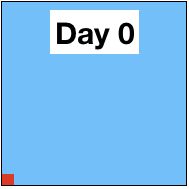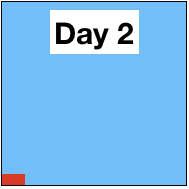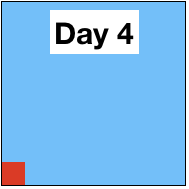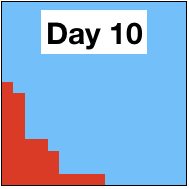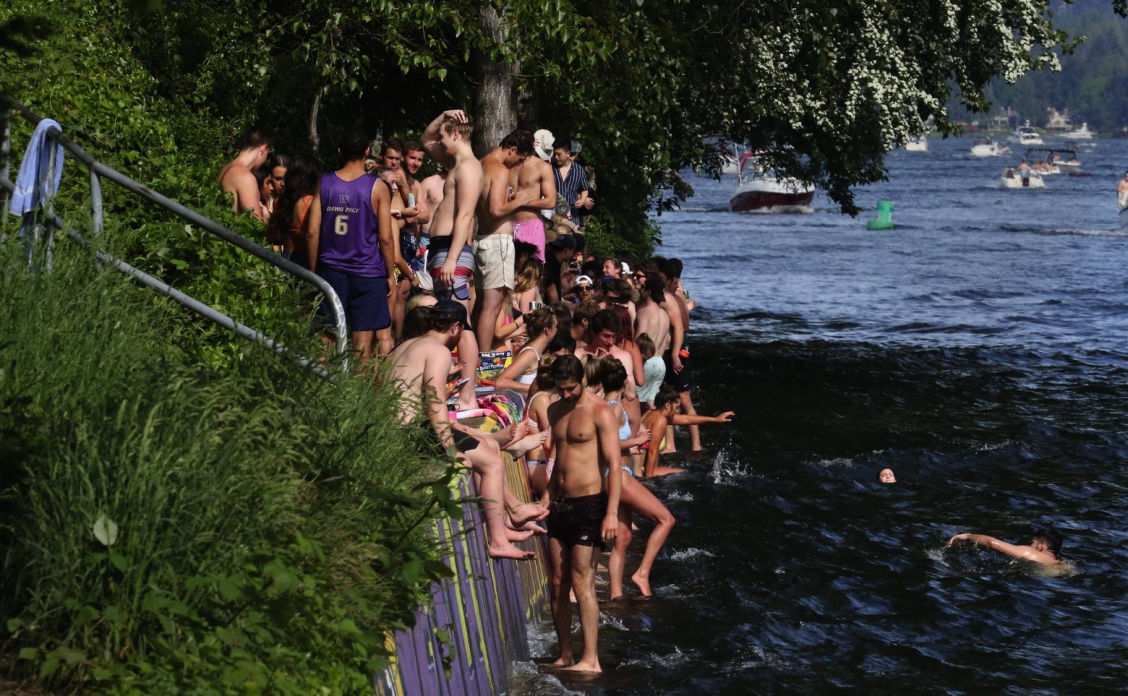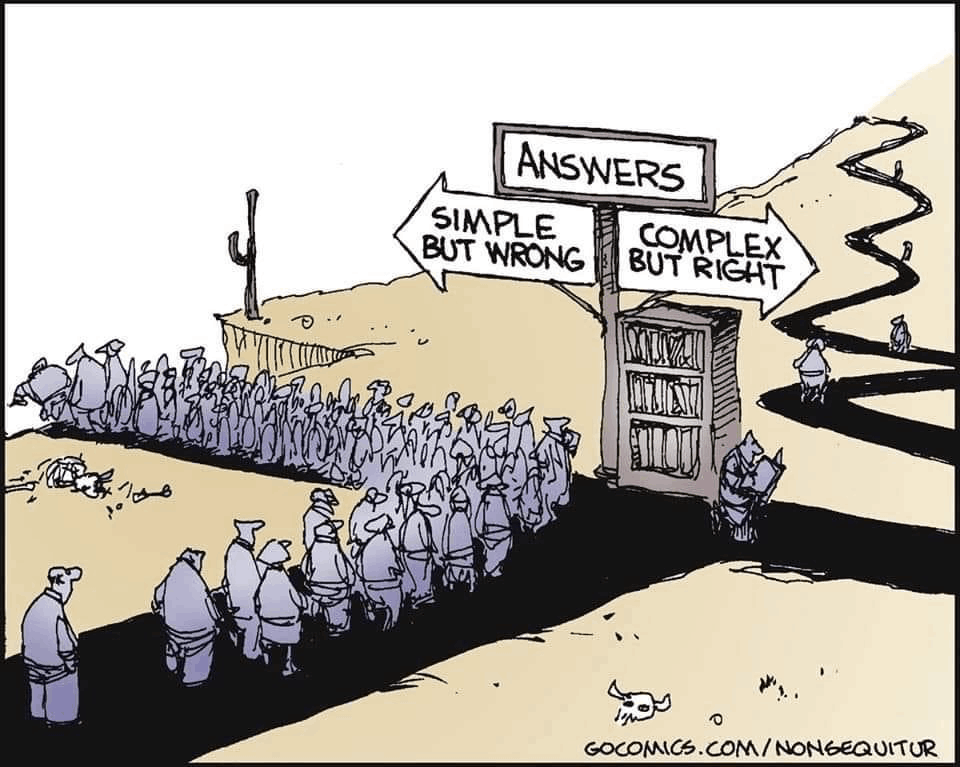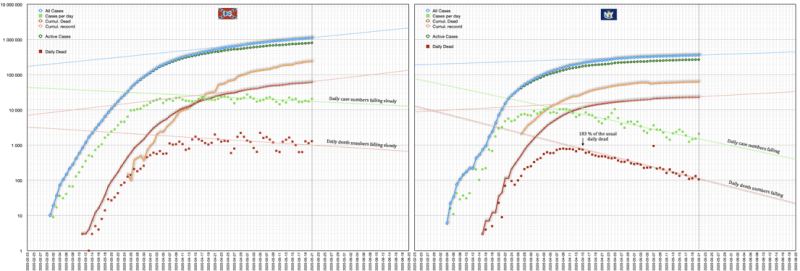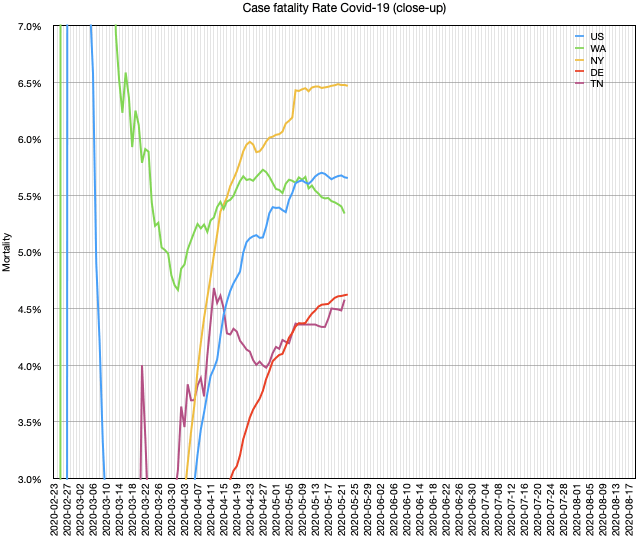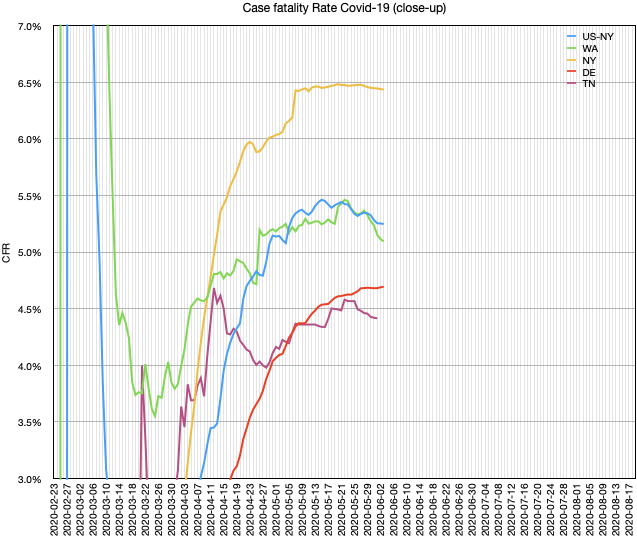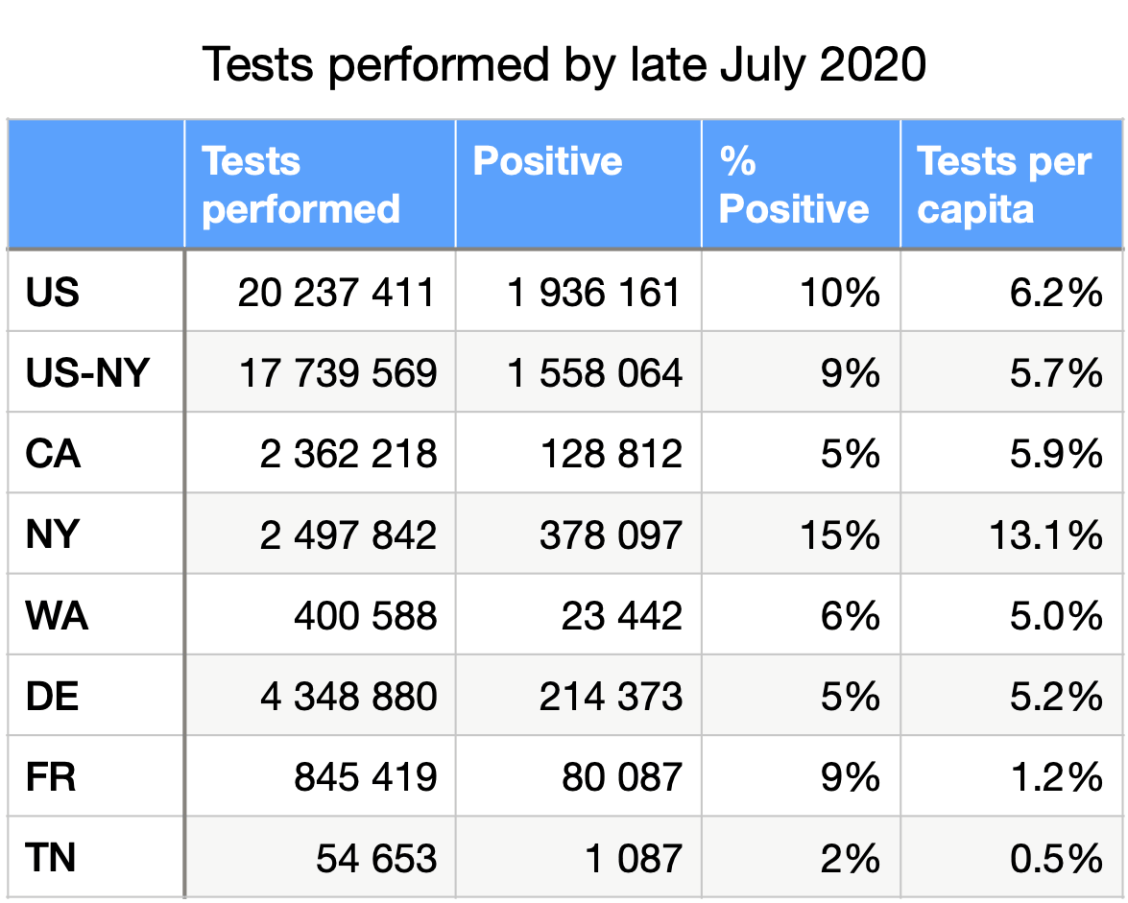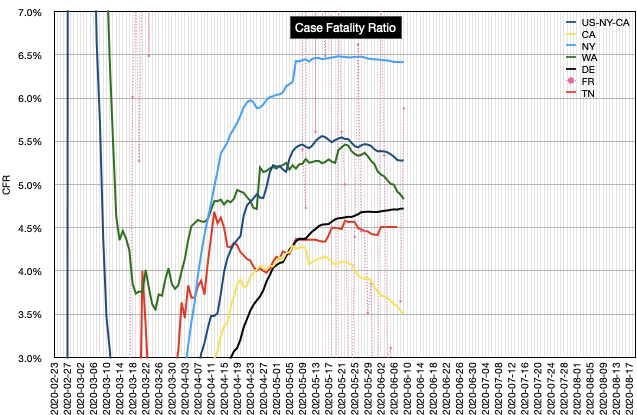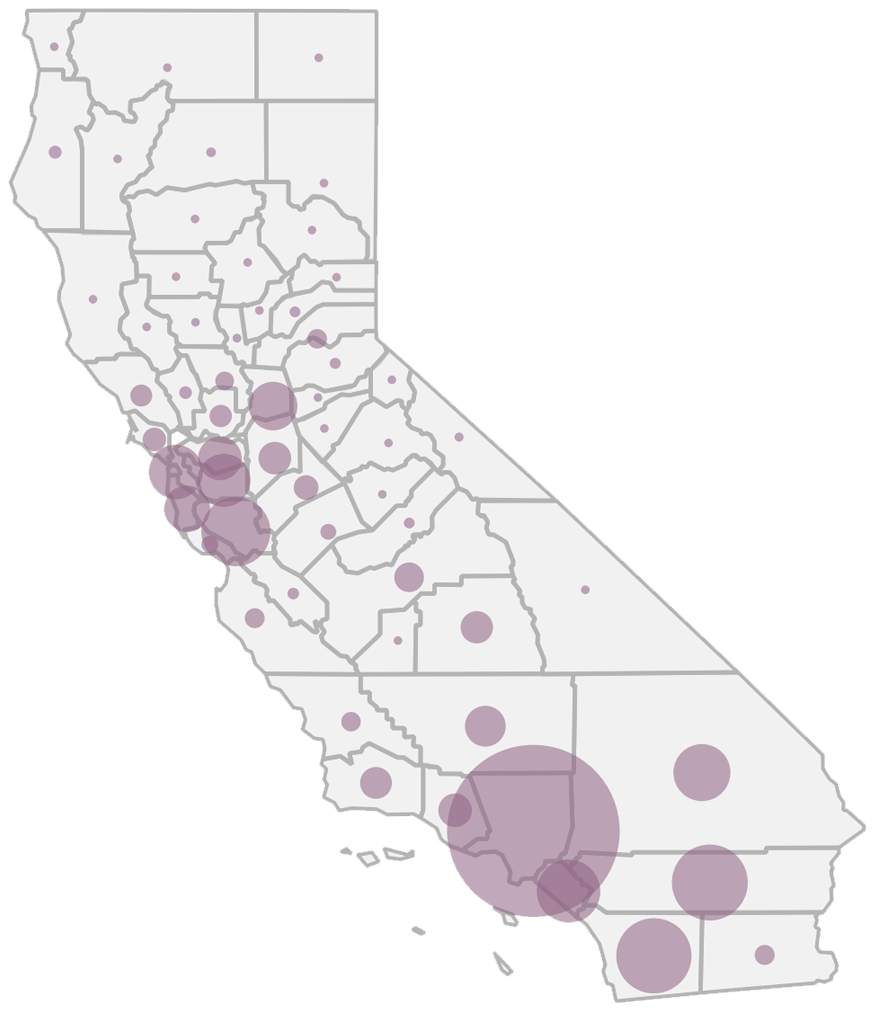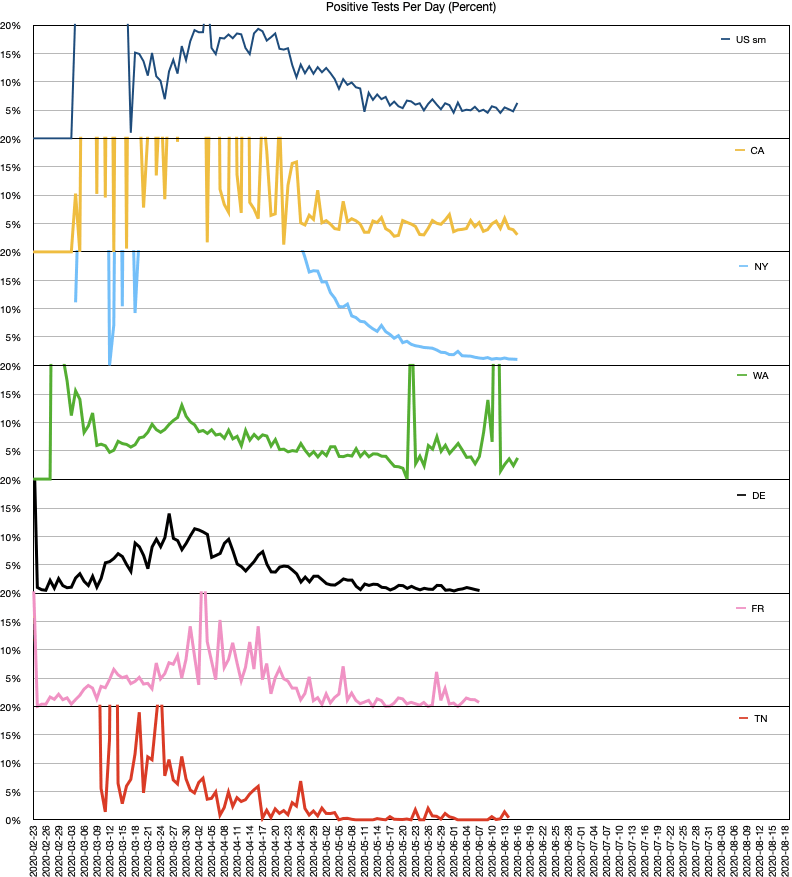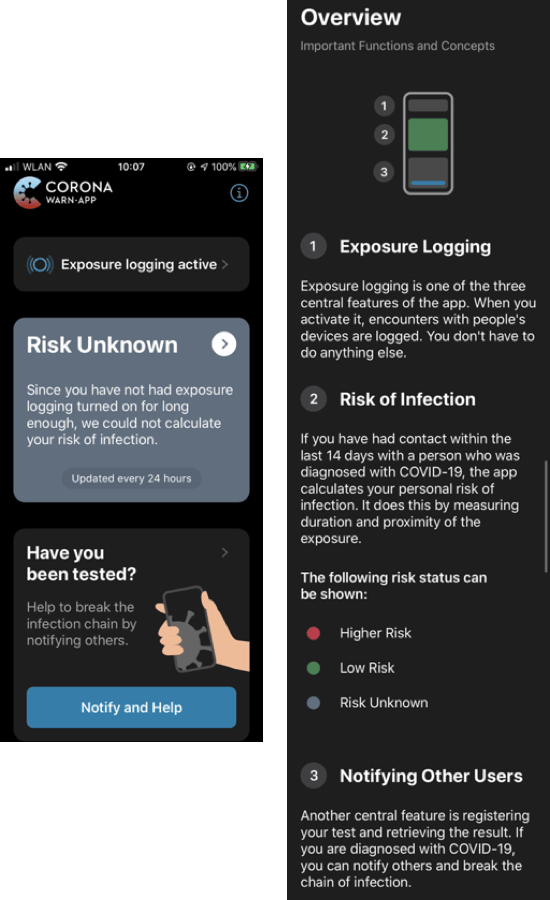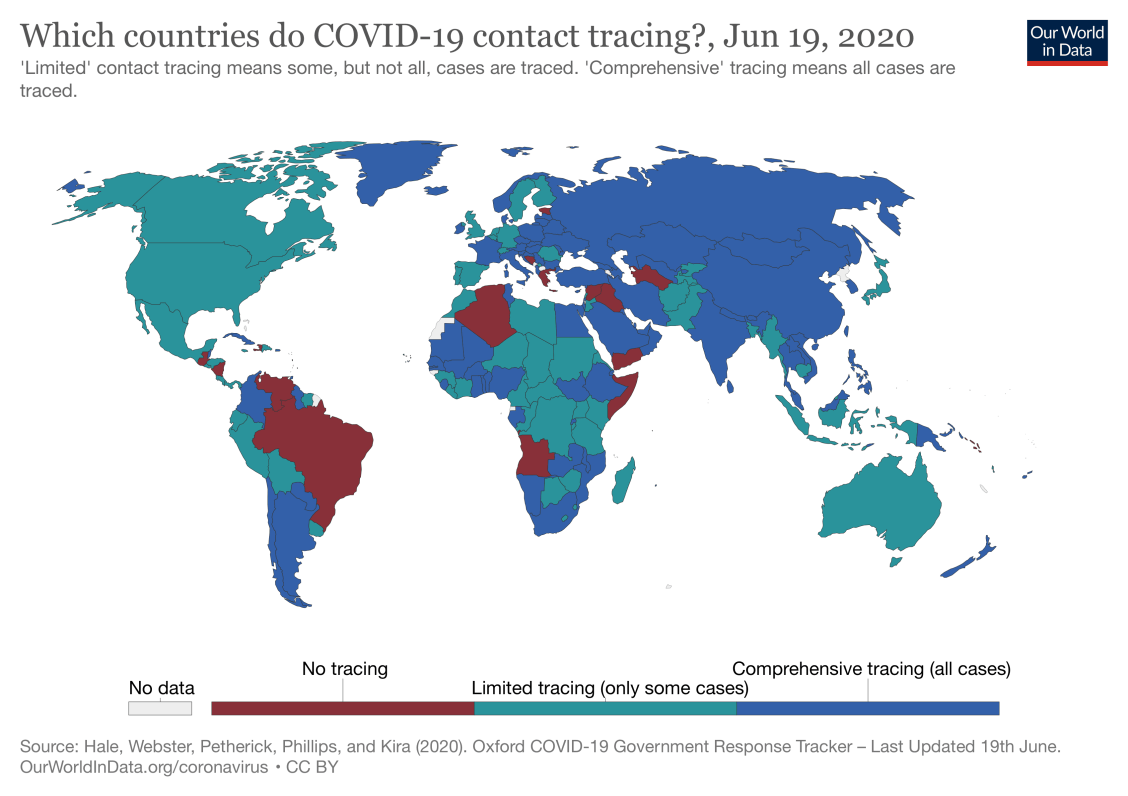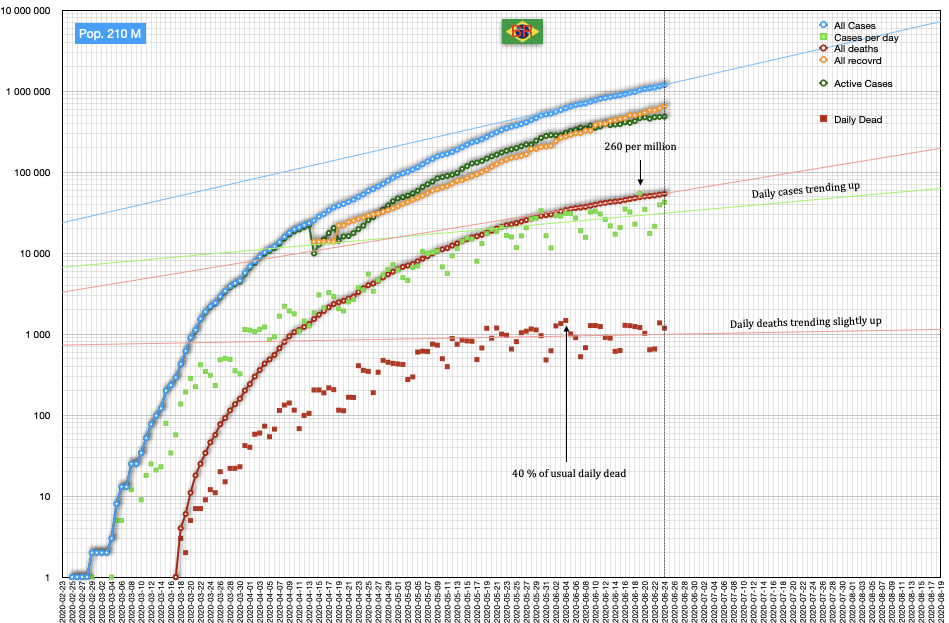 There is one water lily in the pond. It is summer and the pond is full of nutrients.
There is one water lily in the pond. It is summer and the pond is full of nutrients.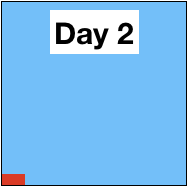 After 2 days, there is another water lily growing from the first one.
After 2 days, there is another water lily growing from the first one. It is day 4 and we have 4 lilies. So you think, there are 2 lilies every two days. So that growth is worrisome but cannot be too bad.
It is day 4 and we have 4 lilies. So you think, there are 2 lilies every two days. So that growth is worrisome but cannot be too bad.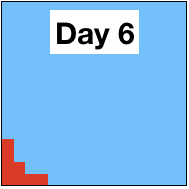 It is day 6 and you expect 6 lilies. But you see 8. Maybe you miscounted. But it is not worrying you.
It is day 6 and you expect 6 lilies. But you see 8. Maybe you miscounted. But it is not worrying you. It is day 8 and you count 16 lilies. You start to worry. But not too much because 95 % of the lake is still uncovered.
It is day 8 and you count 16 lilies. You start to worry. But not too much because 95 % of the lake is still uncovered. On day 10, with 32 lilies and 12 % of the lake covered, it is dawning on you that you were wrong.
On day 10, with 32 lilies and 12 % of the lake covered, it is dawning on you that you were wrong.  If you don't act at all, day 12 will see 25 % of the lake covered.
If you don't act at all, day 12 will see 25 % of the lake covered. Day 14 will have half of the lake covered.
Day 14 will have half of the lake covered.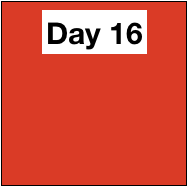 On day 16 the lake is fully covered in sea lilies.
On day 16 the lake is fully covered in sea lilies.